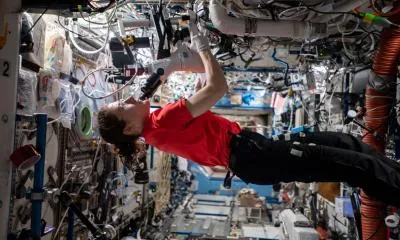
Groundbreaking Cancer Research in Space: A Hopeful Future for Patients on Earth
2024-11-02
Author: Ming
Introduction
Recent advancements in cancer research conducted aboard the International Space Station (ISS) have unveiled extraordinary breakthroughs that could revolutionize the way we combat cancer, not just for breast and prostate types, but potentially for all forms of the disease.
Microgravity and Cancer Research
Through a project sponsored by the ISS National Lab, the biotechnology firm MicroQuin has been exploring the effects of microgravity on cancer cells. The team identified significant microgravity-induced alterations in cancer cell signaling pathways that are crucial for the survival of these malignancies. One of their major discoveries was the crystallization of a protein known as TMBIM6, which plays a pivotal role in how cancer cells manage their intracellular environment—essentially, the internal conditions that allow them to thrive.
Development of Novel Therapeutic Compound
What makes this research exceptionally promising is the development of a novel therapeutic compound derived from these findings. MicroQuin's technology involves a small molecule that specifically binds to TMBIM6 and disrupts the cancer cells' ability to regulate their internal environment, ultimately leading to cell death. Importantly, TMBIM6 is only activated in cancerous cells, meaning that this treatment minimizes harm to healthy cells—a significant achievement in cancer therapy.
Efficacy Across Cancer Types
In laboratory tests, the therapeutic demonstrated efficacy across a broad spectrum of cancer types, raising hopes that it could provide a universal treatment solution. But the implications of this research extend beyond cancer. Scott Robinson, MicroQuin’s Founder and CEO, points out that insights into the regulation of the intracellular environment may also apply to a variety of other serious health conditions. These include neurodegenerative diseases, traumatic brain injuries, and even responses to viral infections. "At the heart of every disease or injury, you have an intracellular environment change," says Robinson. "If we can modify how diseases affect cellular conditions, we have the potential not only to stop them but also to slow their progression."
Personal Connection to the Research
For Amelia Smith, the science communications manager at ISS National Lab, the mission resonates on a personal level. A breast cancer survivor herself, she underscores the importance of these discoveries: "Breakthroughs in space research can provide a glimmer of hope in the struggle against cancer and other devastating illnesses."
Collaboration and Support
This pivotal research was made possible thanks to the support of the Technology in Space Prize, initiated by the Center for the Advancement of Science in Space (CASIS). This collaboration, which includes major partners like Boeing and the MassChallenge startup accelerator, highlights the significance of fostering innovation through scientific exploration in space.
Conclusion and Future Prospects
With the hope that microgravity research will pave the way for more effective treatments, the scientific community and patients alike now anxiously anticipate what the future holds. Could the next generation of cancer therapies be launched from 250 miles above Earth? The potential seems vast, and so does the hope it brings.

 Brasil (PT)
Brasil (PT)
 Canada (EN)
Canada (EN)
 Chile (ES)
Chile (ES)
 España (ES)
España (ES)
 France (FR)
France (FR)
 Hong Kong (EN)
Hong Kong (EN)
 Italia (IT)
Italia (IT)
 日本 (JA)
日本 (JA)
 Magyarország (HU)
Magyarország (HU)
 Norge (NO)
Norge (NO)
 Polska (PL)
Polska (PL)
 Schweiz (DE)
Schweiz (DE)
 Singapore (EN)
Singapore (EN)
 Sverige (SV)
Sverige (SV)
 Suomi (FI)
Suomi (FI)
 Türkiye (TR)
Türkiye (TR)